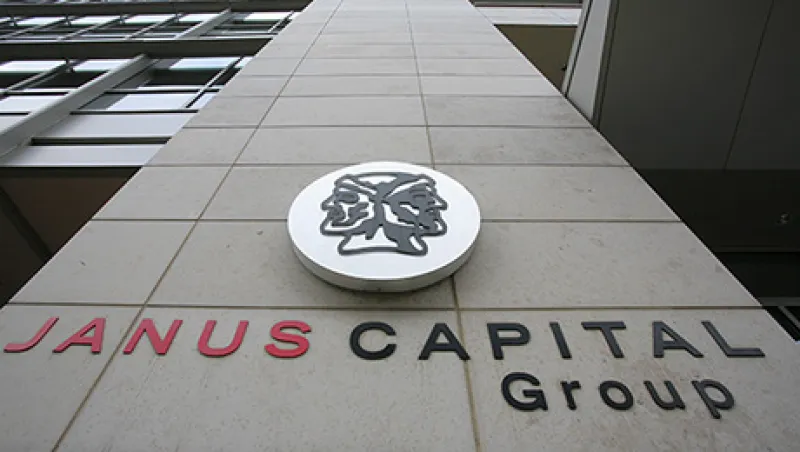The proposed merger between Denver, Colorado–based Janus Capital and London-based Henderson Group to create a combined global asset manager with more than $320 billion in assets was met with a largely positive response from the firms’ investors and Wall Street analysts alike. Janus shares opened at $16 on the New York Stock Exchange, after closing Friday at $14.01.
Janus CEO Richard (Dick) Weil and Henderson CEO Andrew Formica will become co-CEO’s of the joint entity, to be called Janus Henderson Global Investors, with the transaction expected to close in the second quarter of 2017. The new firm will have a combined market cap of around $6 billion. The deal is being achieved through a stock swap, with Henderson making up around 57 percent of the merged entity, which will be headquartered in London and listed on the New York Stock Exchange and the Australian Stock Exchange. Management says it expects the deal to result in at least $110 million in annual cost savings.
It’s easy to understand the rationale for the transaction, given the combined global distribution and product range that the new company will be able to offer. But the regulatory, cultural and logistical challenges of engaging in a cross-border merger remain high, and the deal is ultimately a marriage between two firms that have the vast majority of their assets in long-only active management strategies — at a time when the industry trend, both among institutional and retail investors, is toward either passive, low-fee funds or active, high-alpha generating investments that cost more.
On a conference call after the deal was announced, Weil and Formica told analysts they see a future for active management, but the firms who succeed will need to be those with the scale and resources to be able to deliver a multitude of strategies with differing risk profiles and superior risk-adjusted returns.
“The key to having a good firm, and to helping your clients, is to make sure your investment engine delivers solid risk-adjusted returns over time,” Weil, 52, said on the call.
Despite such optimism from the two CEOs, the transaction reflects the pressures active managers are facing. Goldman Sachs analysts Chris Turner and Vishal Agarwal wrote in a note to clients that in announcing the merger, “management cited a number of drivers for the M&A, including accelerating fee pressure, regulatory driven cost-inflation, competition from ETFs and expansion of distribution footprint.” The analysts referred to a report they wrote last week arguing that “the pressures of a low-return environment are likely to encourage asset managers to pursue three types of inorganic growth”: growth for scale, product expertise and distribution. The Janus/Henderson deal fits all three.
Janus, which has strong partnerships in Japan, is expected to be able to help Henderson grow in Japan and in the U.S. “I’ve made no secret of our ambitions to grow in the U.S. and to build our business in Japan with a strong partner,” said Formica, 45, on the call. Henderson, which got its start in Australia and trades on both the UK and the Australian stock exchange, has greater distribution networks in the UK, Europe and Latin America.
The Janus merger marks the ninth deal for Formica since he took over as CEO of Henderson in 2008. These deals include the acquisitions of New Star Asset Management and Gartmore Group, both UK firms that struggled in the aftermath of the 2008 economic collapse. Shares of Henderson, which had been one of the UK’s worst-performing listed asset managers early in Formica’s tenure, were hammered once again after the UK voted to exit from the European Union in June but have since rebounded and surged nearly 17 percent on the Janus partnership news.
Follow Imogen Rose-Smith on Twitter at @imogennyc.





